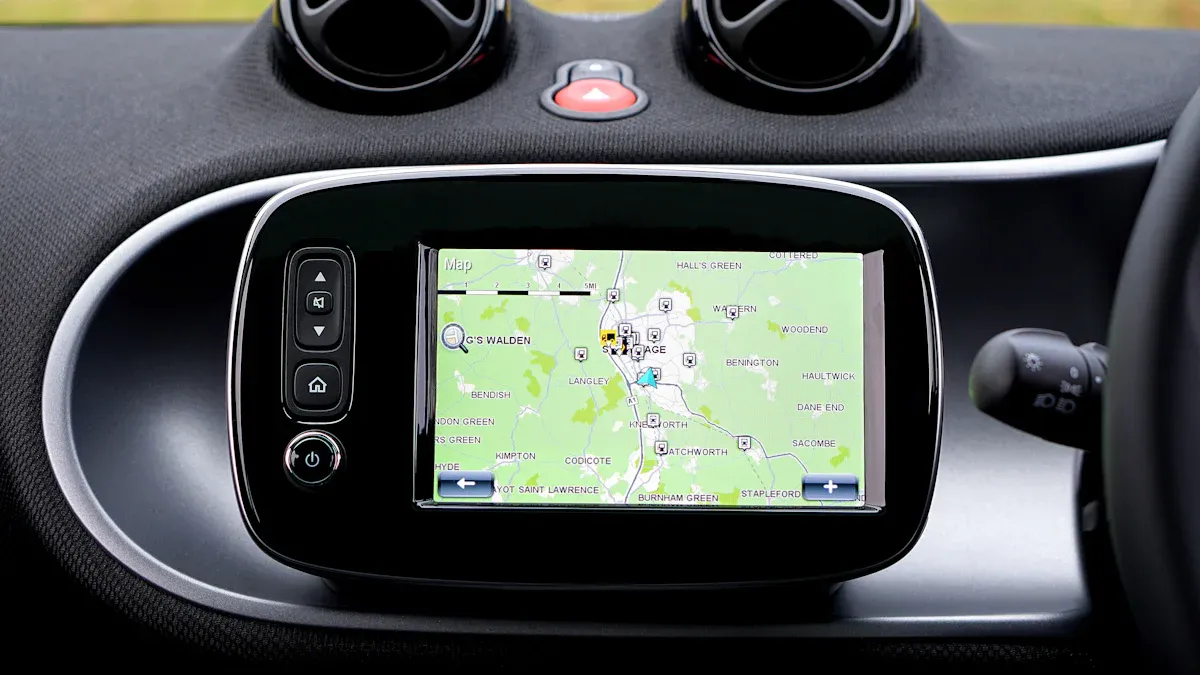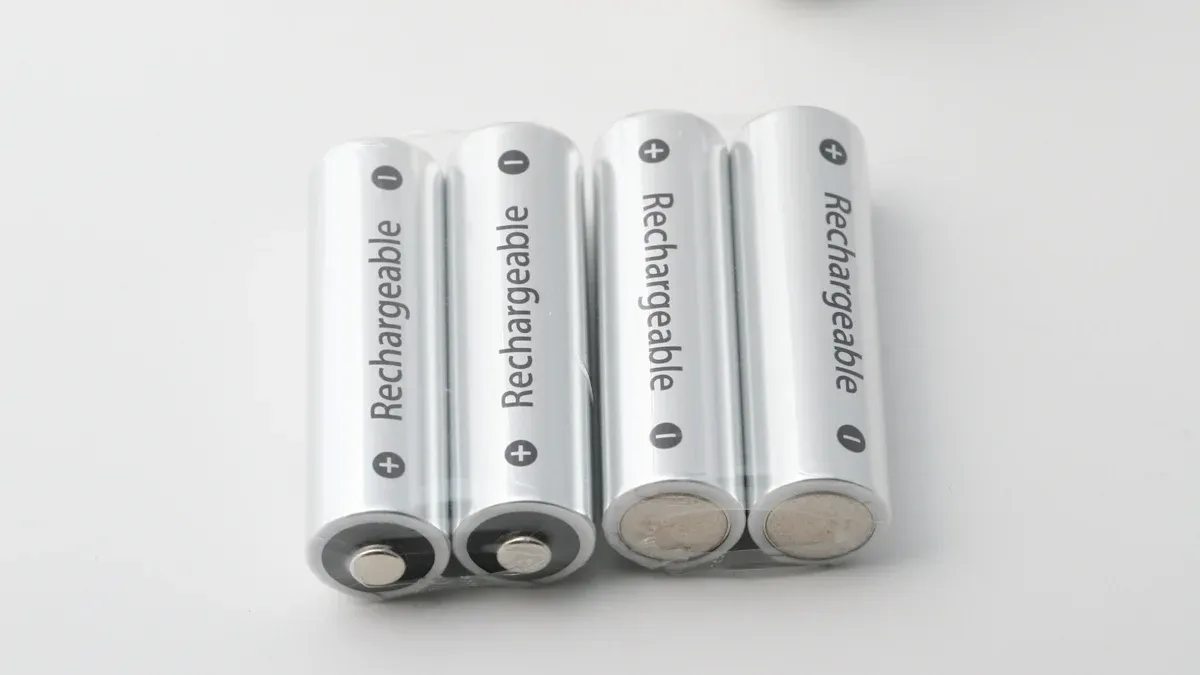
The GPS tracker market is valued at over $3.2 billion, making your choice of power source critical. When you select lithium batteries, you must focus on three key factors: high energy density, temperature tolerance, and safety certifications. These elements directly impact your tracker’s runtime and its reliability in different weather. A certified lithium battery ensures operational safety and a long life for the battery. These lithium batteries are the heart of your tracking device.
Core Specs for GPS Tracking Devices

For GPS tracking devices, you must understand a few core specifications. These details determine if a battery will perform well or fail when you need it most. You should focus on energy density, voltage stability, and proper sizing to ensure reliability.
Energy Density and Capacity (mAh)
High energy density is the main reason you choose lithium batteries. This metric tells you how much power a battery can store relative to its weight. Lithium-ion batteries offer energy densities from 150 to 200 Wh/kg. The more compact lithium-polymer types provide a similar range of 130 to 200 Wh/kg. This feature allows for long runtimes in small devices.
Next, you must consider capacity. A battery’s capacity, measured in milliampere-hours (mAh), is a key factor for how long your wireless GPS tracker runs. A higher mAh value gives you a longer runtime on a single charge. For GPS tracking devices that send frequent updates, a battery with a higher mAh rating is essential.
Voltage and Current Stability
A lithium battery provides a stable voltage output, which is critical for electronics. Think of voltage as the electrical pressure pushing power to your device. GPS tracking devices contain sensitive chips that require a consistent voltage to operate correctly. An unstable current can lead to tracking errors or even damage the device. Quality lithium batteries deliver a steady stream of power, protecting your investment and ensuring accurate data transmission.
Sizing Your Lithium Batteries
Sizing your battery involves more than just physical dimensions. You must match the battery’s electrical specifications to your device’s requirements. The wrong voltage can permanently damage your tracker, while a capacity that is too low will result in poor performance and constant recharging.
Pro Tip: Always check your device’s technical manual or contact the manufacturer. They will specify the required voltage (e.g., 3.7V) and recommend a minimum capacity (mAh) for optimal performance. Choosing the right battery ensures your tracker works as intended.
How to Choose the Best Lithium Battery for Your Use Case

To choose the best lithium battery, you must look beyond basic specs. You need to analyze your specific application. Your operating environment, how often you use the device, and its power settings all determine the ideal battery choice.
Environmental Temperature Range
You must consider the temperatures your GPS tracker will face. Standard lithium-polymer (LiPo) batteries operate well in a range of about -20°C to 60°C (-4°F to 140°F). This range covers many common situations. However, extreme heat or cold can reduce a battery’s performance and shorten its life.
For demanding jobs, you may need a wide-temperature battery. These specialized lithium batteries ensure your device works reliably in harsh conditions. Certain industries depend on this technology for their gps tracking devices.
- Cold Chain Logistics: These operations monitor refrigerated shipments and need a battery that functions in freezing conditions.
- Fleet Management: Commercial trucks and emergency vehicles travel through diverse climates, requiring consistent power.
- Agriculture and Wildlife Tracking: Devices in open fields must endure seasonal temperature swings for a long operating life.
- Industrial Asset Monitoring: Equipment in deserts or on remote sites faces extreme heat and cold, making a durable battery essential.
Rechargeable vs. Primary (Li-SOCl2)
Your next decision involves choosing a battery type. You can select either a rechargeable battery or a primary (single-use) one. Your device’s usage pattern will guide this choice.
Rechargeable lithium batteries, like Lithium-ion and Lithium-Polymer (LiPo), are perfect for frequently used devices. The 3.7V LiPo battery is a common standard for its excellent balance of voltage and capacity. It is lightweight and can be made into flexible shapes, making it ideal for wearable trackers. You can charge these lithium-ion rechargeable batteries hundreds of times.
Primary lithium batteries, like Lithium-Thionyl Chloride (Li-SOCl2), are designed for single use. You cannot recharge them. Their strength is an incredibly long shelf life, often lasting over 10 years. This makes them perfect for long-term, low-power applications like tracking shipping containers or monitoring remote assets where changing a battery is difficult.
Quick Comparison: Rechargeable vs. Primary This table helps you see the main differences. | Battery Type | Shelf Life | Cycle Life | Best For | | :— | :— | :— | :— | | Li-ion/Li-Po | Declines over time | 500–1,500 cycles | Daily use devices (vehicles, pets) | | Li-SOCl2 | 10+ years | 1 cycle (not rechargeable) | Long-term asset tracking |
Your Device’s Tracking Profile
How your GPS tracker uses power directly impacts battery selection. You must match chemistry to application for the best results. A device’s “tracking profile” describes how often it wakes up to send its location.
A continuous tracking profile with updates every minute consumes a lot of power. The GPS and cellular radios are the biggest power drains. This frequent activity will deplete a rechargeable battery quickly, often in less than a day. In contrast, a device that “pings” its location only once per day uses far less energy. A logistics company, for example, extended battery life from two months to three by switching from real-time to 15-minute updates.
Many modern gps tracking devices use a “deep sleep” mode to save power. In this state, the device uses very little energy. It only wakes up to transmit data.
- For devices in deep sleep most of the time, a Li-SOCl2 lithium battery is an excellent choice. Its low self-discharge rate means it loses very little power while idle.
- For devices used daily with frequent updates, lithium-ion rechargeable batteries are more practical. You can easily recharge them for the next day’s work.
Ultimately, you should set the longest tracking interval that still meets your needs. This simple adjustment is the most effective way to extend your battery’s life.
Safety and Longevity Essentials
You must prioritize safety and longevity when selecting lithium batteries. A quality battery not only performs well but also operates safely over its entire life. Understanding the roles of management systems, certifications, and proper care will protect your device and investment.
The Role of a Battery Management System (BMS)
Think of a Battery Management System (BMS) as the brain of your lithium battery. This small electronic circuit board is your first line of defense. It ensures the battery operates within safe limits, which is critical for both performance and safety. A BMS provides several key protections:
- Overcharge and Over-Discharge Protection: It stops the battery from charging past its maximum voltage or draining too low. This prevents permanent damage and extends the battery’s life.
- Temperature Control: The BMS monitors heat levels. It can shut down the battery if it gets too hot or cold, preventing a dangerous condition called thermal runaway.
- Short Circuit Protection: It guards against short circuits, which can cause fires.
Using a battery without a BMS is risky. It can lead to faster degradation, reducing the usable capacity of rechargeable batteries by a significant amount. In the worst cases, it creates a serious fire hazard. A BMS is essential for a long operating life.
Key Safety Certifications (UL, IEC, CE)
You should always look for safety certifications on your battery. These marks show that an independent body has tested the product for safety. Key certifications include UL, IEC, and CE. For example, the UL 1642 standard specifically tests lithium batteries to prevent fire or explosion risks. Manufacturers selling in Europe must have a CE mark, and non-compliance can lead to their products being removed from online marketplaces. These certifications are your proof that the battery meets strict safety standards.
Maximizing Battery Life and Longevity
You can take simple steps to maximize your battery’s life. How you charge, use, and store your GPS tracker directly impacts its long lifespan. A BMS helps by managing the health of rechargeable batteries, but your habits matter, too.
Pro Tip: For the best rechargeable battery life, try to charge and use your device between 15°C and 35°C (59°F to 95°F). You should avoid charging below 0°C (32°F), as this can cause permanent damage.
If you need to store your device for a long time, keep the battery at a partial charge (around 50%) in a cool, dry place. For rechargeable devices you use daily, simple adjustments like reducing the tracking frequency can dramatically extend the time between charges. Proper care ensures you get the most out of your battery.
Choosing the right lithium batteries in 2025 comes down to a three-step verification process. This simple check ensures your device has a long operating life.
- Verify the battery offers high energy density for your desired runtime.
- Confirm the temperature range matches your operational environment.
- Insist on a lithium battery with a built-in BMS and proper safety certifications.
This careful selection is key to device safety and a long lifespan. Your attention to detail guarantees optimal performance and a better life for your GPS tracker’s battery.
FAQ
What is the most common battery for GPS trackers?
The 3.7V lithium-polymer (LiPo) battery is a very popular choice. You will find it offers a great balance of power and size. Its flexible shape fits well in many modern GPS tracking devices, making it a versatile option for daily use.
Can I use a battery with a higher mAh rating?
Yes, you can often use a battery with a higher milliampere-hour (mAh) rating. This will give your device a longer runtime.
Important: You must make sure the new battery has the same voltage (V) and physical dimensions to fit and work correctly in your tracker.
How do I know if a battery is safe? 🛡️
You should look for safety certification marks on the battery. Key marks include UL, IEC, and CE. These symbols show the battery passed strict safety tests. A built-in Battery Management System (BMS) also adds a critical layer of protection.
Does tracking more often drain the battery faster?
Yes, frequent tracking updates use much more power. The GPS and cellular radios consume significant energy each time they activate. You can extend battery life by setting a longer interval between location pings. This simple change makes a big difference.

